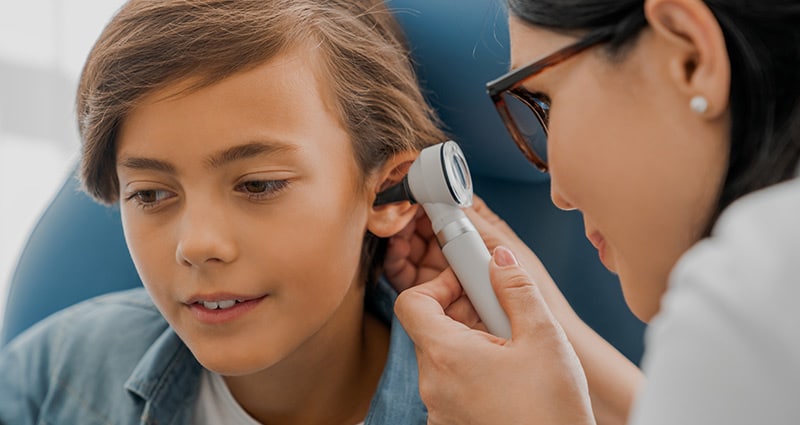Summer in the South requires water to cool off from the humidity and heat.
In addition to taking water safety seriously, when kids are in and out of the water frequently, parents also need to be attentive to their ears. It can be tricky to tell the difference between an ear infection or swimmer’s ear.
Swimmer’s ear is an infection in the outer ear canal. It’s often caused by water that remains after swimming or even bathing, creating a moist environment where bacteria can grow. Swimmer’s ear is most common in children because of their narrow ear canals. A middle ear infection is behind the eardrum, most often caused by a viral infection.
Tips to Tell the Difference
1. Hearing Difficulties
Temporary hearing loss is a symptom for both swimmer’s ear and middle ear infections, and it’s often one of the first signs parents notice.
2. Where is the Pain?
Swimmer’s ear pain is on the outer ear canal near the ear opening and increases when you pull on the earlobe. A middle ear infection, however, hurts in the inner ear near the eardrum. Pain increases when lying down, which makes sleeping difficult.
3. Look for Visible Symptoms
With swimmer’s ear, the outer ear may be red and swollen or even look like a rash. Your child may complain of an itchy ear and scratch. Watch for bad-smelling drainage. Middle ear infection symptoms include fever, pulling or tugging on the ear, decreased appetite, diarrhea or vomiting.
4. Consider the Source
If the ear pain starts after a recent swim or otherwise being in the water, it’s likely swimmer’s ear. A middle ear infection would often include upper-respiratory infection symptoms, such as congestion, runny nose and watery eyes, in the days before the ear pain began.
How Treatments Differ
Your pediatrician is your first call (or MyChart message) if your child has ear pain.
Suspected swimmer’s ear may best be handled with a video visit. Over-the-counter medicines and a warm compress can help with pain, and antibacterial drops are usually recommended for bacterial infections.
A middle ear infection needs to be examined in person, and over-the-counter medicines can be used to treat the pain. Antibiotics would be used for bacterial infections, although ear infections typically go away in a few days. Read more ear infection FAQs here.
If it happens that your child needs to see an ear, nose and throat specialist, our network includes exceptional ENT specialists. Your pediatrician can refer you. Read more about ENTs.




